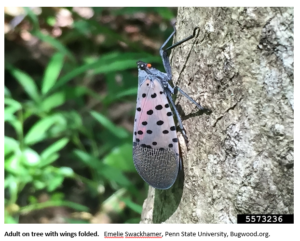
Lanternflies Have Arrived in NC! Not Good News!!
My mother told me that if you don’t have anything good to say, don’t say anything. Therefore, I’m just …



Extension and research at NC State address timely issues impacting our state. Extension delivers trusted information directly into the hands of farmers and agribusinesses, helping them translate knowledge into solutions that grow our economy and communities.
El inglés es el idioma de control de esta página. En la medida en que haya algún conflicto entre la traducción al inglés y la traducción, el inglés prevalece.
Al hacer clic en el enlace de traducción se activa un servicio de traducción gratuito para convertir la página al español. Al igual que con cualquier traducción por Internet, la conversión no es sensible al contexto y puede que no traduzca el texto en su significado original. NC State Extension no garantiza la exactitud del texto traducido. Por favor, tenga en cuenta que algunas aplicaciones y/o servicios pueden no funcionar como se espera cuando se traducen.
Inglês é o idioma de controle desta página. Na medida que haja algum conflito entre o texto original em Inglês e a tradução, o Inglês prevalece.
Ao clicar no link de tradução, um serviço gratuito de tradução será ativado para converter a página para o Português. Como em qualquer tradução pela internet, a conversão não é sensivel ao contexto e pode não ocorrer a tradução para o significado orginal. O serviço de Extensão da Carolina do Norte (NC State Extension) não garante a exatidão do texto traduzido. Por favor, observe que algumas funções ou serviços podem não funcionar como esperado após a tradução.
English is the controlling language of this page. To the extent there is any conflict between the English text and the translation, English controls.
Clicking on the translation link activates a free translation service to convert the page to Spanish. As with any Internet translation, the conversion is not context-sensitive and may not translate the text to its original meaning. NC State Extension does not guarantee the accuracy of the translated text. Please note that some applications and/or services may not function as expected when translated.
Collapse ▲
My mother told me that if you don’t have anything good to say, don’t say anything. Therefore, I’m just …
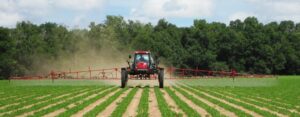
Do you need last-minute pesticide credits? N.C. Cooperative Extension – Cleveland County Center is offering a class on Thursday, …
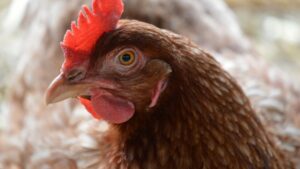
A deadly bird flu is threatening our chickens called Highly Pathogenic Avian Influenza (HPAI). Please take this notice seriously. …
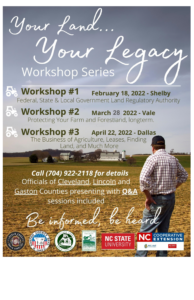
Lincoln County Agricultural Land Owner, You are invited to a series of workshops with critical, practical information to help preserve your …
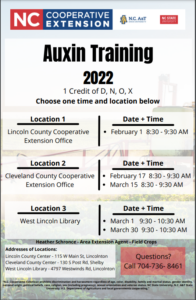
Several opportunities are being offered for Auxin Training by Heather Schronce, your area agent for Field Crops in Lincoln …
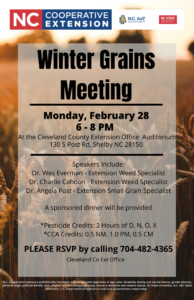
The 2022 Winter Grains Meeting will be on Monday, February 28th from 6-8 p.m. at the N.C. Cooperative Extension, …

Summary: Two separate research trials were performed by NC State Extension using Xyway LFR fungicide in the Piedmont of …
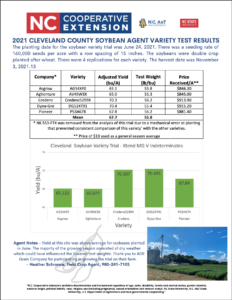
Below is a copy of the revised 2021 Soybean Variety Trial Test Results from Cleveland County. Thank you to all the …
NC AgVentures, is an NC State Extension program that provides grants to North Carolina farmers and Community Groups for …
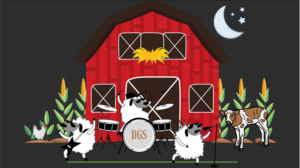
Come on out to Woodmill Winery on September 24, 2021, at 7:30 p.m. for a free concert with Dirty …
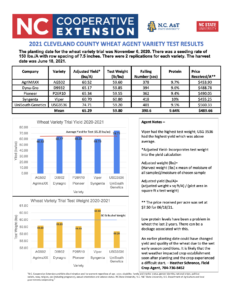
Below is a copy of the 2021 Wheat Variety Trial Test Results from Cleveland County. Please let us know …

Pesticide classes forming now! Must call to register! If we haven’t received any preregistration calls for a class, that …

Higher Corn Populations? Where is the Industry Headed? In this video, Area Agent, Tim Hambrick, discusses why higher populations are …
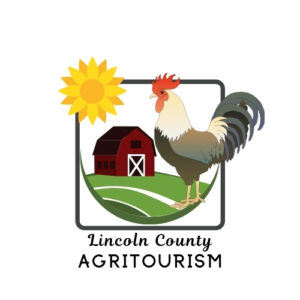
To say that Lincoln County is a 30-mile-long amusement park might seem silly at first. But it’s more of …

Good knife skills are one of the most important aspects of cooking and staying safe in the kitchen! This …

Looking for a simple and fast way to determine if you need nitrogen in your yard or field? Then …
Our corn group finished our second video detailing the results of our variety trial. Please watch the video and …
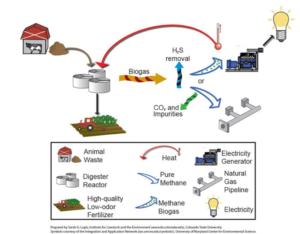
N.C. Cooperative Extension, Dairy ASA – Ashley Robbins will be hosting a webinar on February 4, 2021, from noon–1:30 …
This series is designed for small farmers interested in learning about food safety and obtaining their Good Agriculture Practices …

Vineyard establishment involves careful planning, thorough site preparation, vineyard design, planting, and trellis construction. Unlike …

Grapes grown in North Carolina are sometimes exposed to unfavorable climatic conditions and biological pests …

This manual prepares pesticide applicators for Forest Pest Control Certification exams in the following states: …
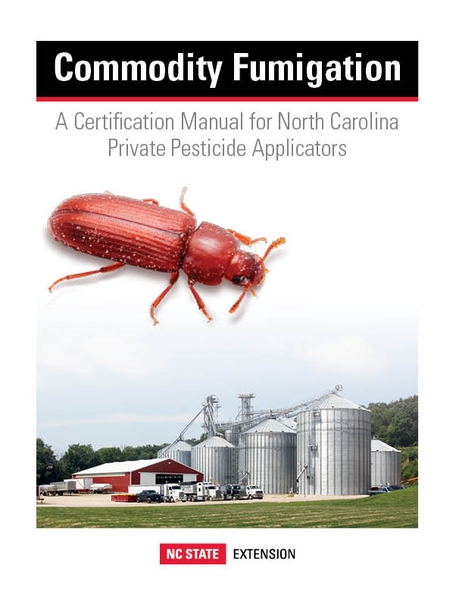
This manual provides guidance tailored for North Carolina's non-commercial pesticide applicators using fumigants in commodity …
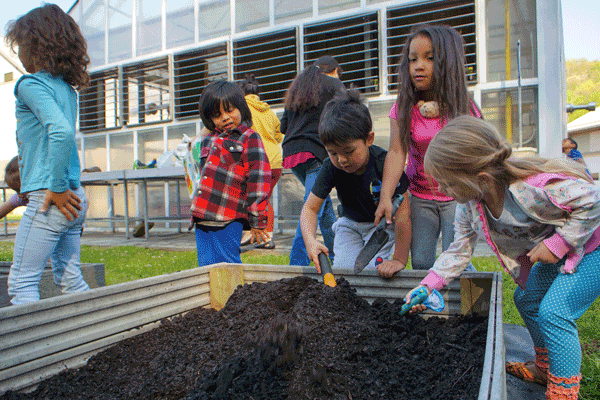
This chapter of the Farm to Early Care and Education Resource Guide for North Carolina …
Including sloped screens for solid-liquid manure separation can have positive impacts on manure management systems …
Screw press separators can divide a single by-product stream into a solid and liquid stream …
This factsheet summarizes key technologies used to produce pellets from animal manures and the impact …